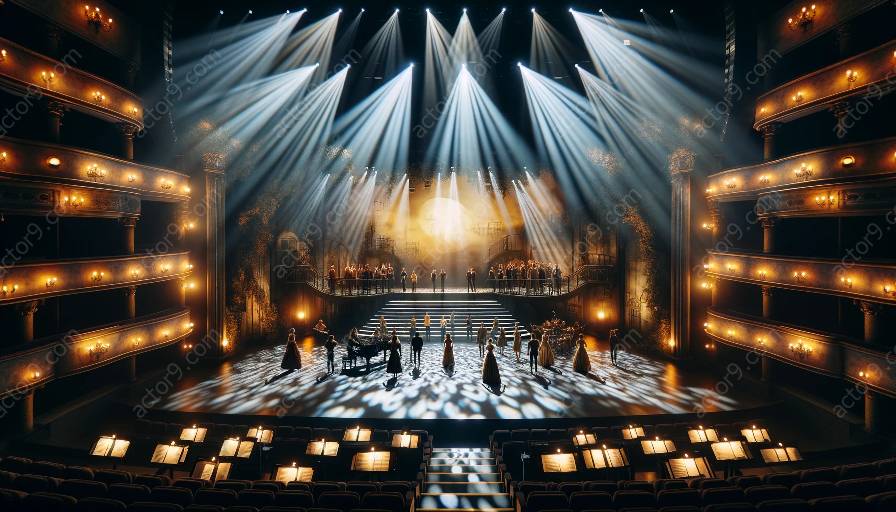Lighting design in modern musical theatre productions plays a pivotal role in creating immersive experiences for audiences. It is a vital element that enhances the storytelling, sets the mood, and guides the audience's focus. The techniques used are innovative, reflecting the latest advancements in lighting technology and artistic creativity.
Impact of Lighting Design in Musical Theatre
Before delving into specific techniques, it's important to understand the significant impact of lighting design in musical theatre. Lighting not only illuminates the stage but also evokes emotions, enhances visual aesthetics, establishes the time and place of the story, and supports the overall artistic vision of the production.
Dynamic Color Mixing
One of the most innovative lighting techniques used in modern musical theatre is dynamic color mixing. LED fixtures and advanced control systems allow lighting designers to seamlessly blend a wide spectrum of colors, creating mesmerizing atmospheres and transitioning between scenes with fluid color changes. This technique adds depth and dimension to the stage, enriching the visual narrative of the musical.
Projection Mapping
Projection mapping has revolutionized the way lighting is used in musical theatre. This technique involves projecting dynamic visuals onto various surfaces, such as set pieces, scrims, and even performers themselves. In modern productions, projection mapping can be used to create stunning background scenery, transform stage elements, and integrate animated effects seamlessly into the performance, enhancing the overall visual spectacle of the musical.
Moving Lights and Automated Systems
Modern musical theatre productions often make use of moving lights and automated systems to create dynamic and immersive lighting designs. These fixtures can be programmed to move, change colors, and follow performers, adding excitement and energy to the performances. The flexibility and precision of moving lights allow for intricate choreography of light and shadow, elevating the visual impact of musical numbers and dramatic sequences.
Intelligent Lighting Control
Intelligent lighting control systems have become indispensable in modern musical theatre. Lighting designers can now use advanced software to program intricate cues, control individual fixtures, and synchronize lighting effects with music and choreography. These systems offer a high degree of control, allowing for seamless coordination of lighting elements to complement the unfolding narrative and emotional beats of the musical.
Practical Special Effects
Innovative lighting techniques in modern musical theatre often incorporate practical special effects to heighten the audience's sensory experience. This can include the use of fog, haze, rain, and other atmospheric elements that interact with light to create captivating visual moments. Practical effects, when integrated with precise lighting cues, can transport audiences into the world of the musical, enhancing the overall engagement and immersion.
Example of Innovative Lighting Use: Hamilton
In the groundbreaking musical




































